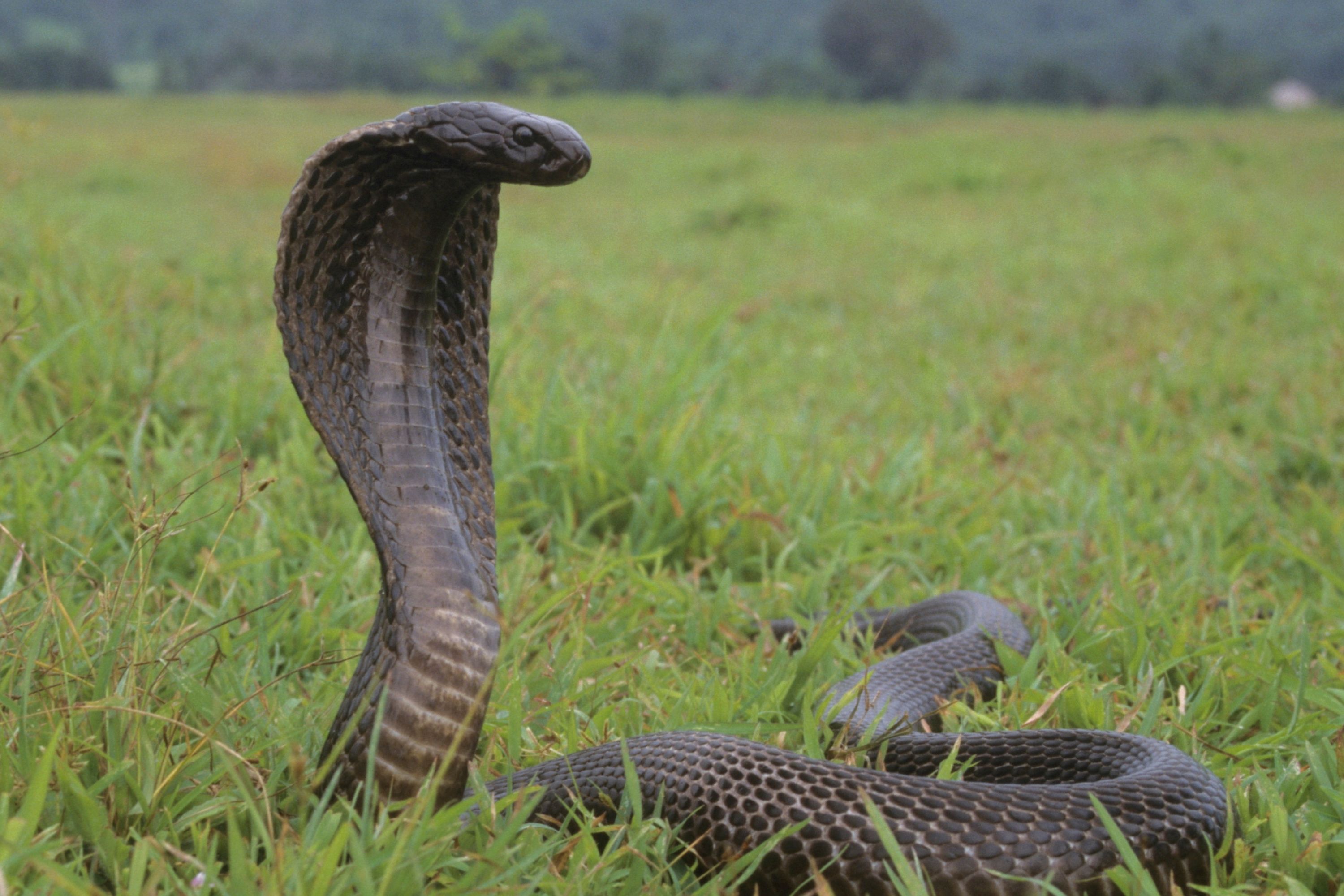Chinese cobra
(Naja atra)

Description
Naja is a genus of venomous elapid snakes known as cobras ("true cobras"). Members of the genus Naja are the most widespread and the most widely recognized as "true" cobras. Various species occur in regions throughout Africa, Southwest Asia, South Asia, and Southeast Asia. Several other elapid species are also called "cobras", such as the king cobra (Ophiophagus hannah) and the rinkhals (Hemachatus haemachatus), but neither are true cobras, in that they do not belong to the genus Naja, but instead each belong to monotypic genera Hemachatus (the rinkhals) and Ophiophagus (the king cobra/hamadryad). Until recently, the genus Naja had 20 to 22 species, but it has undergone several taxonomic revisions in recent years, so sources vary greatly. Wide support exists, though, for a 2009 revision that synonymised the genera Boulengerina and Paranaja with Naja. According to that revision, the genus Naja now includes 38 species. Naja species vary in length and most are relatively slender-bodied snakes. Most species are capable of attaining lengths of 1.84 m (6.0 ft). Maximum lengths for some of the larger species of cobras are around 3.1 m (10 ft), with the forest cobra arguably being the longest species. All have a characteristic ability to raise the front quarters of their bodies off the ground and flatten their necks to appear larger to a potential predator. Fang structure is variable, all species except the Indian cobra (Naja naja) and Caspian cobra (Naja oxiana) have some degree of adaptation to spitting. All species in the genus Naja are capable of delivering a fatal bite to a human. Most species have strongly neurotoxic venom, which attacks the nervous system, causing paralysis, but many also have cytotoxic features which cause swelling and necrosis, and have a significant anticoagulant effect. Some also have cardiotoxic components to their venom. Several Naja species, referred to as spitting cobras, have a specialized venom delivery mechanism, in which their front fangs, instead of ejecting venom downward through an elongate discharge orifice (similar to a hypodermic needle), have a shortened, rounded opening in the front surface, which ejects the venom forward, out of the mouth. While typically referred to as "spitting", the action is more like squirting. The range and accuracy with which they can shoot their venom varies from species to species, but it is used primarily as a defense mechanism.
Taxonomic tree:







